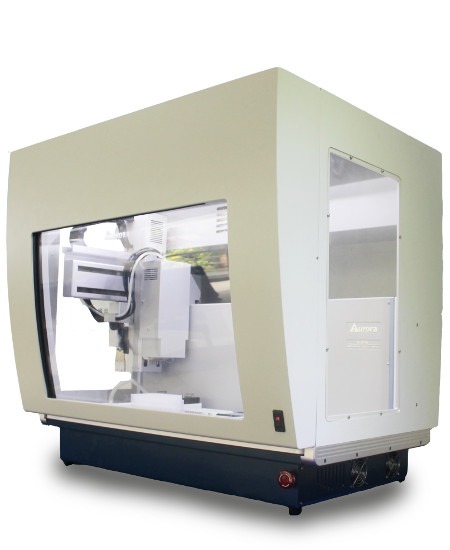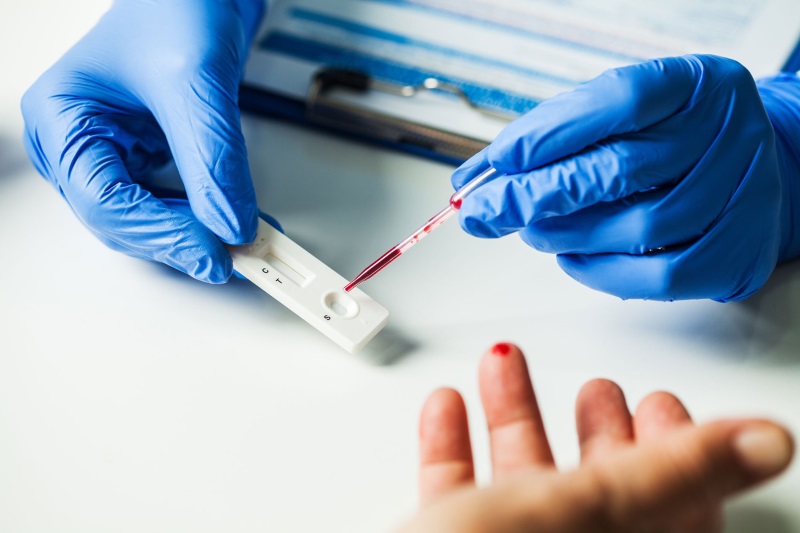Many countries do not make public the number of COVID-19 tests performed, but those which do show just how staggering the demands on diagnostic laboratories have been in the past year. Take the United States as an example: as of March 23, 2021, over 363 million coronavirus tests had been performed.1 The US has run more COVID-19 tests than there are residents, which is incredible considering just 14 months prior it had run zero. With testing identified early in the pandemic as a critical component to the success of countries’ fights against it, governments sought to ramp up testing capabilities at unprecedented rates. US laboratories went from running essentially no tests in February 2020, to about 150,000 tests per day by April 2020, and peaked at a 7-day average of almost 2 million tests per day by January 2021.2
With such a huge surge in testing demand coming at a time when staffing was rated as labs’ number one challenge, there was almost no choice in what the response would be: labs had to automate.3

Improvise, Adapt, Overcome
Medical diagnostic laboratories, which often perform the same tests repeatedly and with standardized workflows, have a lot to benefit from automation. The automation of diagnostic laboratory workflows carries many benefits such as improved reproducibility, increased efficiency of laboratory staff, increased throughput, reduced turnaround time, and heightened safety of the laboratory technicians. These benefits have been even more important over the past year as laboratories have faced immense pressure to clear testing backlogs, improve turnaround, and increase throughput with staffing equal to or lower than pre-pandemic levels to maintain social distancing protections.
While longstanding predictions for fully automated robotic diagnostic laboratories have not yet come to fruition, the advances in clinical lab automation in our era are creating more reliable, reproducible, high-throughput, and shorter-turnaround laboratories. While human intervention is still required at some point, the latest automation advances have come in the form of high-throughput automated sample preparation and testing, and “sample-to-answer” molecular diagnostic (MDx) systems. The broad benefits of both types of automated solutions can be loosely classified into three main categories: reproducibility, efficiency, and safety.
Medical laboratory automation has a key role in improving reproducibility by reducing the data variability introduced by human factors and decreasing the potential for contamination caused by sample handling. Data variation, which is caused by a difference in the performance of the protocol, can go unnoticed during the experiment but will be observed in data sets and even in published results. Especially in diagnostic settings where the same tasks are being performed repeatedly, humans are vulnerable to progressive mental fatigue, physical weariness, and distractions. Automation reduces this variability by reducing the reliance of the workflow on error-prone humans.
The efficiency of the laboratory is improved by lab automation due to its effects on staff productivity. Holland and Davies (2020)4 noted that the key benefit from automated processes is the amount of time saved, which can therefore be used on other experiments. With automation, each laboratory technician can run many more experiments.
Automation helps improve laboratory safety by reducing the exposure of the researchers to the samples by allowing the automated machinery to handle the task. With less sample handling performed by humans, there is less risk of accidental exposure to hazardous reagents or potentially infectious diagnostic specimens.
Automation Isn’t a Monolith
While liquid handling systems once provided the core of any diagnostic laboratory automation system, the advent of sample-to-answer MDx instruments have provided diagnostic laboratories with a choice of how they will choose to automate. There is no standardization of these MDx instruments; all of them are unique and have their own benefits and drawbacks, but they all share a general set of features which allows us to compare them to more traditional laboratory automation systems based on liquid handlers.
Comparison of Diagnostic Laboratory Automation Technologies | ||
“Traditional” Liquid Handling | “Sample-to-Answer” MDx | |
| Human effort required | Very low. Commonly sample preparation will be automated, but there may be “hands on” effort required for analysis, depending on the test performed. | Virtually none. |
| Skill set / training required | Standard laboratory training for that test | Less specialized training required |
| Regulatory | Generally does not require regulatory approval to incorporate automation into a workflow. | Regulatory authorization is required for every test. |
| System flexibility | Very flexible. Can be configured for many different testing workflows. | Can only perform the specific test(s) the system is designed for. |
| Instrument costs | Varies based on need | Very high |
| Cost per sample | About the same as running a non-automated test | Usually higher than other test formats |
| Sample use | Often can use a fraction of the sample | Usually consumes the whole sample |
While sample-to-answer molecular diagnostic instruments remove the need for specialized staff who are knowledgeable in the diagnostic workflow by eliminating just about all human functions, they are limited in what tests can be performed, usually have substantially higher costs than traditional liquid handler-based automation platforms on both a start-up and per-sample basis, and are not nearly as flexible as traditional liquid handling-based systems. Clinical diagnostic laboratories should fully assess their current and projected future testing needs when determining what kind of automation systems to implement. For instance, Aurora’s Automated COVID-19 RT-PCR Reaction System would allow for future reconfiguration, enabling laboratories to change workflows when COVID demand subsides while still realizing the full value of their automation setup.

Survival of the Fittest
The global COVID-19 pandemic has been a difficult and stressful time for the entire healthcare industry. While hospitals have rightfully gotten much of the focus, diagnostic laboratories have also carried a heavy burden. Challenges provide opportunity for growth, however, and the best performing laboratories of the future will be those who have taken the opportunity to improve their practices and workflows today. The pandemic has changed the ways that labs operate, but in many ways for the better. Those which have implemented diagnostic laboratory automation systems will have made permanent investments in their efficiency. As clinical laboratories have faced persistent staffing shortages which are projected to get worse5, automation systems which boost the productivity of the laboratory workforce will necessarily play an ever-increasing role in diagnostic workflows.
References
[1] Hasell, J., Mathieu, E., Beltekian, D. et al. A cross-country database of COVID-19 testing. Sci Data 7, 345 (2020)
[2] The COVID Tracking Project. US Daily Tests. https://covidtracking.com/data/charts/us-daily-tests. Accessed March 29, 2021.
[3] National Health System Crisis Readiness Report 2020 Edition. Accumen. August 27, 2020. https://accumen.com/crisis-report-2020. Accessed March 29, 2021.
[4] Holland, I., & Davies, J. A. (2020). Automation in the Life Science Research Laboratory. Frontiers in bioengineering and biotechnology, 8, 571777.
[5] The American Society for Clinical Laboratory Science. Addressing the Clinical Laboratory Workforce Shortage. Aug 2, 2018. http://www.ascls.org/images/publications/Clinical_Laboratory_Workforce_FINAL_20180824.pdf. Accessed March 29, 2021.



